French doors are a great way to add style and charm to any room. However, if you want to ensure your safety and security, it is important that you know how to lock french doors interior. Keep reading for tips on ensuring your French doors remain secure even when locked from the inside.
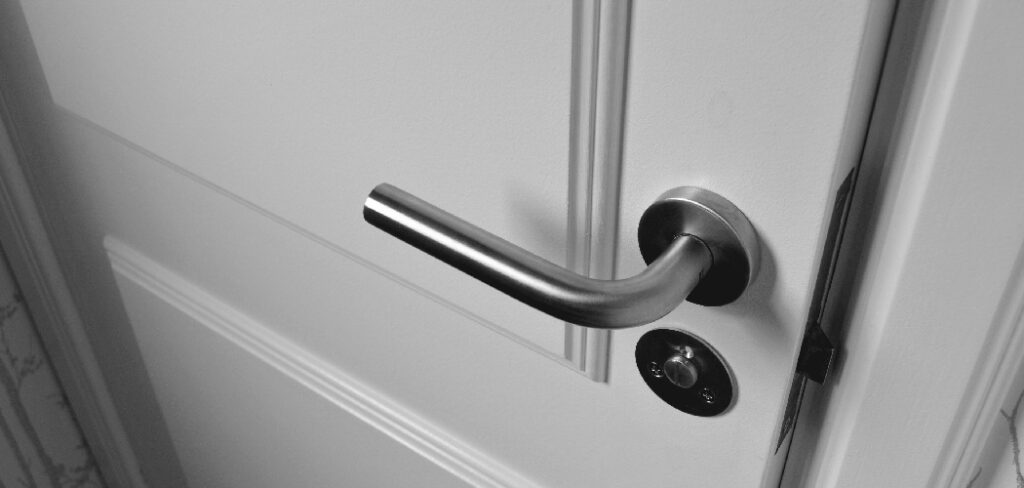
What is a French Door?
French doors are a type of interior door that consists of one or more panels with glass panes. They are designed to allow natural light into a room and create an open and airy feeling. These doors can be opened inwards or outwards, depending on the design and space available. French doors are commonly used as entrance doors for patios, balconies, and gardens but they are also commonly used as interior doors in homes.
You may also come across French doors that do not have glass panes, but they still function in the same way. These doors are commonly referred to as solid French doors.
Can You Lock the French Doors Interior?
French doors can be a beautiful addition to any home; they let in more natural light and provide an extra door for quick exits. But when you have large windows that offer a view into your home, you may want the extra security of locking the French doors on the interior.
Fortunately, there are ways to lock these doors even though they don’t have the standard locks found in regular entryways. For example, installing sliding locks or privacy bolts keeps the doors closed but allows access from the inside.
If you have smaller children in your home and want added security, installing a keyable deadbolt is an effective way of preventing little hands from opening them and letting themselves out.
Whatever solution you choose for locking your French door’s interior, ensuring it is secure enough for your needs will help give everyone peace of mind.
Why Should You Lock French Doors Interior?
French doors are beloved for their beauty and charm, but that does not mean they can be forgotten about when it comes to security. Locking the interior side of such doors gives homeowners an extra layer of home protection. Doing so also ensures that children or pets are unable to wander outside without supervision.
An interior lock can be an unobtrusive addition, too—consider looking for models with a simple thumb latch or hidden lever-based lock. Not only will users gain peace of mind knowing the doors are securely locked, but they will also not have to sacrifice design in favor of safety.
Needed Materials:
Sliding Locks or Privacy Bolts:
These locks are easy to install and are a great way to secure your French doors from the inside. They can be easily attached to the interior face of the doors and slide into place to keep them closed.
Keyable Deadbolt:
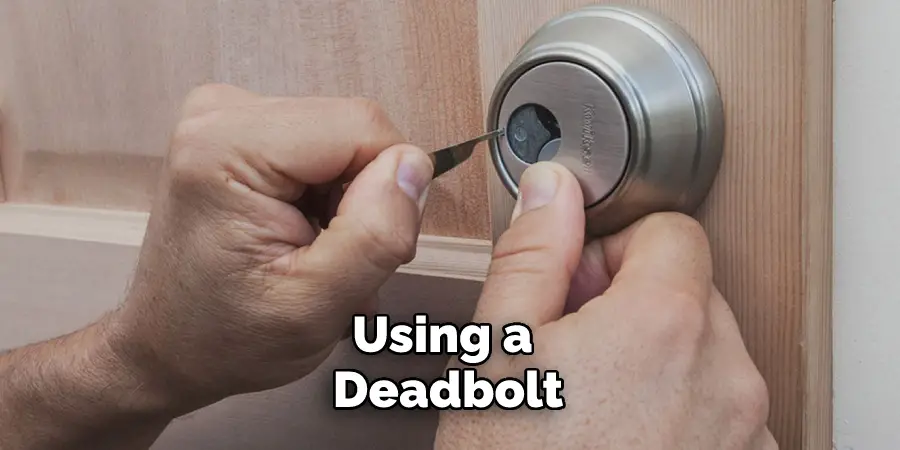
For added security, you can also consider installing keyable deadbolts on your French doors. These require a key to unlock from the outside, making it difficult for intruders to gain access.
Thumb Latch or Lever-Based Lock:
These types of locks are designed to be unobtrusive and can easily blend in with the design of your French doors. They offer a simple way to keep the doors closed and secure from the inside. They are also easy to operate, making them a great choice for households with children or elderly individuals.
9 Ways to Follow on How to Lock French Doors Interior
1. Using a Deadbolt
One of the best ways to lock French doors interior is by using a deadbolt. Deadbolts are simple and effective locking mechanisms that provide an extra layer of security when used on French doors.
The key advantage of using a deadbolt is that it cannot be picked or bumped open as other types of locks can be. This means that if someone tried to force their way through your door, they would have no luck if you had installed a deadbolt.
2. Interior Slide Bolt
Another option for securing your French doors from the inside is by installing an interior slide bolt.
Slide bolts are similar to deadbolts in that they provide an extra layer of security; however, instead of being locked with a key, they are simply slid into place, making them easier and more convenient than traditional locksets.
Plus, since slide bolts come in various styles and finishes, you’re sure to find one that fits your aesthetic and security needs.
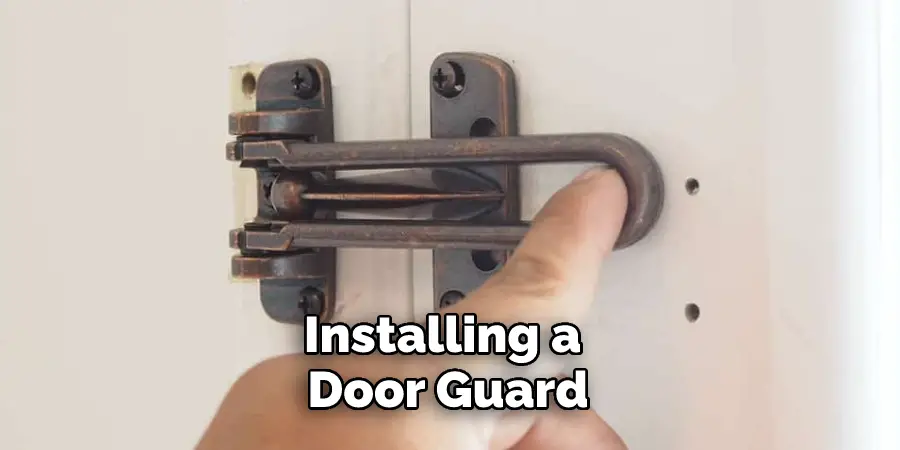
3. Locking Door Knob/Handle Set
A locking door knob or handle set is another way to lock French doors from the inside securely. This type of lock has two knobs or handles, one on each side of the door, that are connected by a latch mechanism. When both handles are rotated simultaneously, the latch is engaged, locking the door in place.
To unlock the door, simply rotate the handles in the opposite direction. It is important to note that these types of locks are not as secure as deadbolts, so they may not be the best option for high-security areas.
4. Window Locks
If you have windows on your French doors, one option for securing them from the inside is to use window locks. Window locks are easy to install and come in various styles, such as key, sliding, or rotary models. Additionally, some window locks come with alarm systems that are triggered when the window is forced open.
You can also use dowels or bars to secure the doors from the inside. These can be slid into place between the floor and the door handle, making it difficult for someone to force their way in.
5. Security Strips and Bars
Another way to secure French doors from the inside is by using security strips or bars. Security strips or bars fit across the width of a door, creating an extra barrier between you and any potential intruders. Most security strips and bars can be easily installed and removed, making them a great option for temporary security.
The only downside to using security strips or bars is that they are more visible than other locking methods, which may not be ideal for homeowners looking to maintain the aesthetic of their French doors.
6. Door Chain Lock
A door chain lock is another popular way to secure French doors from the inside. A door chain lock consists of a metal chain that is attached to the door frame and connected to a latch on the door itself.
When the door is opened, the chain only allows it to open a few inches, creating an extra barrier that stops anyone from entering your space.
7. Door Guard or Door Jammer
Finally, if you are looking for another way to secure your French doors from the inside, you can consider installing a door guard or door jammer. These devices are placed at the bottom of the door and provide a secure locking mechanism that cannot be forced open from the outside.
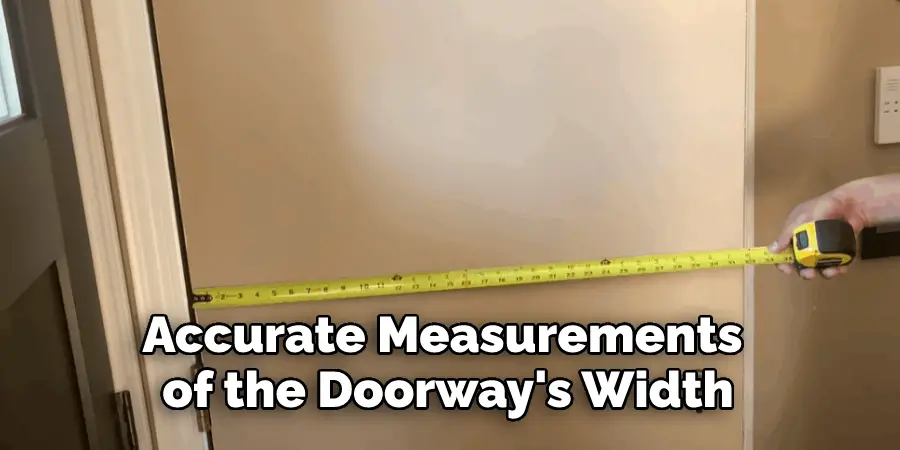
Additionally, some door guards and jammers come with alarm systems that can be triggered when someone attempts to force their way through your door. This added layer of security can give homeowners peace of mind, especially when they are away from home.
8. Utilizing Smart Locks
For those who prefer a more high-tech approach to locking their French doors, smart locks may be the answer. These devices can be controlled remotely through an app on your phone or by using voice commands with a virtual assistant.
Smart locks offer features such as temporary virtual keys for guests, auto-locking after a designated period of time, and monitoring access logs. They can also be integrated with home security systems for added protection.
9. Consulting a Professional
If you are still unsure about how to lock French doors interior or which type of lock would be best for your specific needs, it is always a good idea to consult with a professional locksmith or home security specialist. They can assess your situation and provide expert advice on the best locking options for your French doors.
Remember, it is always better to be safe than sorry when it comes to securing your home and protecting your loved ones. Take the time to research and invest in quality locking mechanisms for your French doors, as they are often a vulnerable entry point for intruders. With the right locks in place, you can have peace of mind knowing that your home is secure and your family is safe.
That’s it! You’ve now learned it with seven different options. Utilize one, two, or all of these methods to keep your home and family safe.
Things You Need to Know Before Locking French Doors Interior
Before you lock interior French doors, there are some important points to consider. First and foremost, French doors add a decorative touch to any room. But if the fit isn’t precise or the frame is not securely mounted, they can be easily forced open.
When installing a lock on a French door set, you must ensure the hardware can withstand tension from being pulled apart. If this isn’t taken into account correctly, it could lead to problems with air infiltration or water penetration.
Additionally, potential burglars can easily discover many interior French door locks, so investing in security locks is highly recommended for increased safety. So before you lock up your interior French doors, be sure to invest in quality construction and select an appropriately secure locking system for peace of mind.
Benefits of Locking French Doors Interior
Installing a locking French door interior can give you enhanced security and peace of mind for your home. Not only does it provide physical protection against intruders, but it also allows for additional control over the airflow throughout the house.
By having the ability to lock from both sides, these doors are an ideal way to reserve access to certain rooms within your home—perfect for when you need privacy or even just some extra humidity control in your bathroom. Thanks to the aesthetics of French doors, they also bring that classic elegance while still providing the effective security you need.
6 Common Mistakes People Make When Trying to Lock French Doors Interior
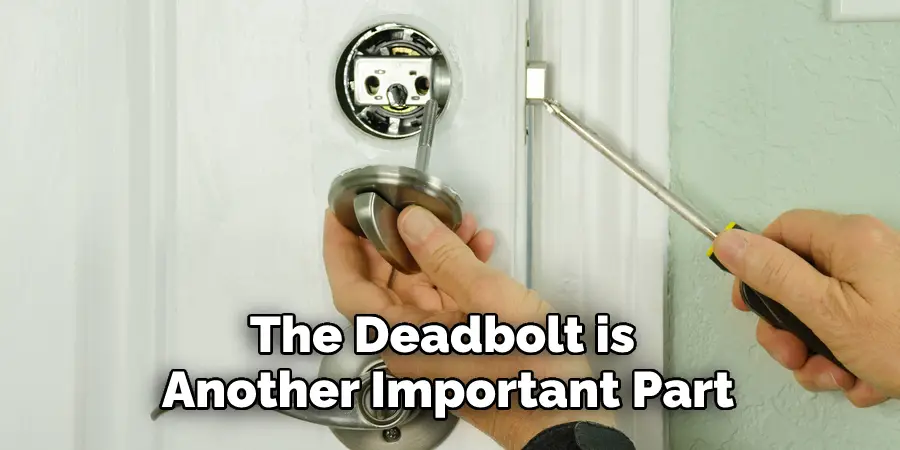
1. Not Measuring the Doorway Properly
One of the most common mistakes people make when installing a locking French door is not measuring the doorway properly. Therefore, it is important to take accurate measurements of the doorway’s width and height before purchasing a door, as this will ensure that the door will fit properly.
2. Not Installing the Latch Correctly
Another common mistake is not installing the latch correctly. The latch keeps the door closed, so it is important to install it correctly. If the latch is not installed correctly, the door may not close properly or may even open on its own.
3. Not Leveling the Door
Another mistake that is often made when installing a locking French door is not leveling the door. The door needs to be level for it to close and latch properly. If the door is not level, it may not close correctly or may even pop open on its own.
4. Forgetting to Install the Strike Plate
The strike plate is what keeps the door locked when it is closed. It is important to ensure that the strike plate is installed correctly, as forgetting to install it can cause the door to be unable to lock properly.
5. Not Installing the Deadbolt Correctly
The deadbolt is another important part of a locking French door, and it is important to ensure that it is installed correctly. If the deadbolt is not installed correctly, it may not work properly or may even pop open on its own.
6. Not Following Instructions Carefully
One of the most common mistakes people make when installing a locking French door is not following instructions carefully. It is important to read and follow all instructions carefully to avoid making any mistakes during the installation. Failure to do so can result in a door that does not function properly or is not as secure as it should be.
Overall, locking French doors interior requires proper measurements, installation, and care to ensure they provide the security and functionality you desire for your home. By considering all the options available and avoiding common mistakes, you can confidently lock your French doors, knowing your home is secure. So go ahead and choose the best option for your needs, and enjoy the beauty and security of French doors in your interior space! Keep safe and stylish with locked French doors!
Frequently Asked Questions:
Q: Can I Install a Lock on My Existing French Doors?
A: Yes, you can install a lock on your existing French doors. There are various types of locks available that can be easily installed without having to replace the entire door. You can also consult a professional for assistance with installation. The most important factor to consider is the type of lock that best fits your door and provides maximum security.
Q: How Can I Tell If My French Doors Are Secure?
A: You can tell if your French doors are secure by checking the quality of the materials used, such as sturdy frames and strong locks. Additionally, you can check for any gaps or loose fittings that may make the doors vulnerable to forced entry. It is also recommended to invest in security locks and have a professional install them for added protection.
Q: Can I Lock French Doors From Both Sides?
A: Yes, you can lock French doors from both sides. This feature makes them ideal for providing privacy and controlling airflow within your home. However, it is important to note that some locking systems may only allow for one-sided locking, so be sure to choose a lock that meets your specific needs. Keeping both sides locked can also act as an added security measure against potential intruders.
Q: Are French Doors Easy to Break Into?
A: With proper installation and quality locks, French doors are not easy to break into. However, they can be more vulnerable if not installed correctly or equipped with secure locking systems. It is recommended to invest in high-quality, sturdy French doors and have them professionally installed for maximum security. Additionally, adding additional security measures such as alarms or motion sensors can also further deter potential burglars.
Q: Can I Customize the Locks on My French Doors?
A: Yes, you can customize the locks on your French doors to fit your specific needs and preferences. There are various types of locking systems available, from traditional key locks to modern digital or smart locks. You can also choose between different levels of security, such as single-cylinder or double-cylinder deadbolts. Be sure to consult a professional for advice on the best lock options for your French doors. Remember to always prioritize safety and security when choosing locks for your home.
Conclusion
No matter which method you choose for locking French doors interior, it is important that you take measures to ensure your safety and security at all times. Deadbolts, slide bolts, and double-sided keyless entry systems are all great options for keeping your French doors secure from the inside while allowing easy access when needed.
With just a few simple steps, you can ensure that your home remains safe and secure no matter what! Thanks for reading our post about how to lock french doors interior.
